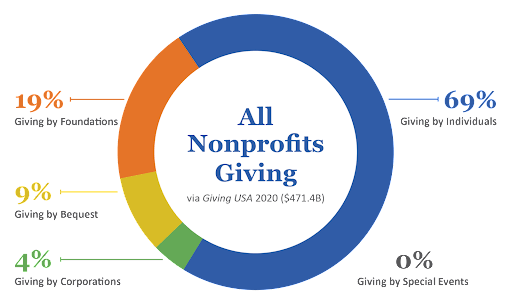The Relevance of Partnership and Collaboration for a Nonprofit Agency in Maximizing Resources and Enhancing Neighborhood Involvement
In the world of not-for-profit companies, cooperation and partnership emerge as necessary mechanisms for cultivating and amplifying sources area engagement. These partnerships not only improve program efficacy however also cultivate a deeper sense of community involvement and possession.
Advantages of Partnership

Additionally, collaboration promotes development by motivating the exchange of concepts and best practices. When companies collaborate, they can discover diverse viewpoints, resulting in imaginative options that may not arise alone. This shared analytic method can inevitably improve solution delivery and program results.
Additionally, collective efforts can boost area engagement. When nonprofits partner with one another, they can set in motion more comprehensive support from stakeholders, including volunteers, contributors, and neighborhood participants. This collective involvement not only boosts visibility yet likewise reinforces the reputation of the taking part companies.
Structure Strategic Partnerships
Partnership amongst nonprofit firms often causes the formation of calculated partnerships, which are crucial for maximizing influence and accomplishing common goals. These partnerships enable organizations to utilize each other's toughness, boosting service shipment and increasing outreach. By aligning objectives and goals, nonprofits can create a collaborating impact that amplifies their reach and effectiveness within the community.
Building tactical collaborations calls for cautious planning and good understanding. Organizations needs to initially determine potential companions that share similar values and goals, making certain compatibility in goal and vision. Developing open lines of interaction cultivates trust, permitting companions to review assumptions, sources, and responsibilities transparently. Regular meetings and collaborative efforts can aid keep energy and address obstacles proactively.
Additionally, clearly defined duties and duties are essential for liability and success. Formalizing the partnership through written contracts can offer a framework for partnership, detailing the scope of work, performance metrics, and evaluation methods. By fostering these calculated partnerships, nonprofit agencies can enhance their ability to deal with neighborhood requirements, innovate options, and set in motion resources effectively, eventually causing an extra substantial and lasting impact in the areas they offer.
Sharing Resources Properly
Just how can nonprofit companies maximize their impact through efficient resource sharing? By purposefully working together with various other organizations, nonprofits can improve their functional performance and extend their reach within the neighborhood. Source sharing involves merging numerous assets, including funds, workers, proficiency, and centers, to attend to common objectives better.

In addition, leveraging each various other's staminas can cultivate advancement. By trading understanding published here and best techniques, firms can enhance service delivery and develop brand-new remedies to area difficulties. Efficient resource sharing likewise cultivates a feeling of unity, strengthening the concept that collaboration is important for achieving significant social impact.
Involving the Area
What strategies can nonprofit agencies use to properly engage their communities? Primarily, developing open lines of communication is crucial. Using different platforms, such as social networks, e-newsletters, and neighborhood forums, allows firms to distribute info, get feedback, and foster dialogue. This two-way interaction not only informs the area regarding the agency's goal and activities however also welcomes input, making area members really feel valued and included.
Additionally, forming partnerships with local organizations can enhance outreach efforts. nonprofit agency. Collaborating with institutions, companies, and other nonprofits can amplify sources and create an extra substantial support network, Check Out Your URL allowing for joint campaigns that reverberate with community needs
In addition, hosting neighborhood events, workshops, and volunteer chances can facilitate deeper involvement. These activities develop a sense of belonging and motivate active involvement, making it possible for people to add to the firm's goals while developing relationships with fellow neighborhood members.
Measuring Collective Success
Evaluating the efficiency of collective efforts is necessary for not-for-profit agencies seeking to optimize their impact. Measuring collaborative success includes developing clear, measurable objectives and utilizing a range of metrics to examine performance. Trick indications might include the variety of collaborations developed, resources shared, and the tangible end results attained with partnership.
To successfully determine success, nonprofits ought to implement a framework that includes both quantitative and qualitative data. Surveys and meetings can give understandings right into stakeholder contentment and the regarded value of partnerships. Furthermore, tracking metrics such as service reach, community engagement levels, and economic performance can supply a comprehensive view of joint efficiency.
Routine assessments should be conducted to determine locations of renovation and best practices. This iterative procedure not only enhances responsibility however additionally promotes a culture of continuous knowing within the organization - nonprofit agency. By transparently sharing evaluation results with partners and stakeholders, nonprofits can reinforce partnerships and build trust fund
Ultimately, determining joint success enables not-for-profit firms to refine their techniques, allot resources a lot more successfully, and reinforce their mission-driven initiatives, leading to a higher cumulative influence on the neighborhoods they offer.
Conclusion

In the world of nonprofit agencies, collaboration and partnership emerge as necessary systems for promoting and amplifying sources area interaction - nonprofit agency. By promoting these critical partnerships, not-for-profit firms can enhance their capability to deal with community needs, introduce options, and mobilize resources properly, inevitably leading to a much more considerable and sustainable impact in the communities they serve
By purposefully collaborating with various other companies, nonprofits can improve their operational performance and expand their reach within the neighborhood.What approaches can nonprofit companies use to successfully engage their neighborhoods?Collaboration and partnership stand as important columns for nonprofit agencies intending to make best use of resources and enhance area engagement.